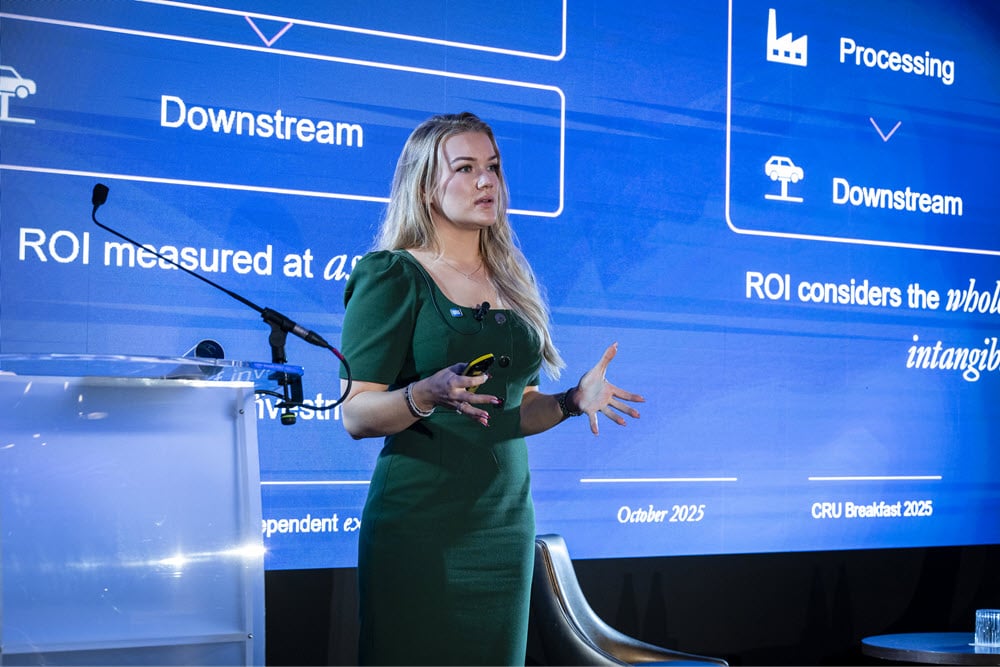Environmental Product Declarations (EPDs) are standard information labels on products that summarise more complex Life Cycle Analysis (LCA) reports. As governments push to impose environmental standards and domestic and border taxes, which apply at a product level, their environmental data will need to be calculated, third-party verified and written up. Many more EPDs could emerge consequently. To help support, CRU has successfully had its methodology on aluminium value chain products data certified by Minviro, an independent LCA specialist.
CRU meets a cruicial third-party certification
CRU has met the requirements for a third-party certification for our asset and product level data methodology, which brings transparency to how our data can be used in the task of creating EPDs. EPDs can be for semi-finished products that are converted into finished consumer products further downstream. Our current certification was for our aluminium value chain data on these products (according to the UN CPC system, in Class 4153 and 4143). The LCA consultancy Minviro carried out the certification.
The outcome is a comprehensive guide to the methodology behind CRU's aluminium data available in our Asset Platform, explaining how it can be used to help in meeting the required standards. We outline the steps we take to ensure that our data enables asset-level greenhouse gas emissions calculations while meeting data quality standards.
This guide is designed for a broad audience, including internal and external stakeholders such as analysts, regulators, policymakers and end-users. While CRU’s data focusses on emissions from the cradle-to-gate aluminium process and calculates emissions at both site and process levels, it is expected that users will combine CRU’s data with their own estimates or use it to cross-check their own calculations. The aim is to help these groups understand CRU’s approach to carbon emissions across the aluminium value chain, enhancing transparency in how the data can be used for emissions reporting.
The key stage in marketing a product’s environmental credentials is carrying out a detailed life cycle analysis (LCA). An LCA follows an international standard and is third-party verified. It is quite complex, covering a wide range of environmental issues and not just carbon emissions. If you think about the different types of environmental concerns a consumer might have, these can be covered in an LCA – they are not just for carbon emissions, but also climate change, recycled content, energy consumption, water consumption and waste generation.
Calculations are not just from the final stage of the price process – the term life cycle indicates that they could include estimates of relevant upstream or downstream Scope 3 emissions, for example. Naturally, an LCA often ends up being complex and not easy to compare with those from other producers even for the same product.
However, while environmentally conscious consumers of these products would want to be reassured by the existence of a thorough LCA, they often just need an affirmation that is easy to understand and absorb. This is what an EPD is, just like a nutrient label on a food item. Even though an EPD is attached to the full-blown LCA, it must still be creating according to an ISO standard, and itself third-party verified. A product category rule is a standard rule book that specifies how to write both the LCA and EPD for each category of product.
While EPDs have been around since the late 1990s and are now most established in the construction industry, a greater buzz from the sustainability teams of our producing clients tells us that EPDs could suddenly become very common in the marketing of semi-finished metal products.
It may be that consumers want to be ever more aware of their own environmental footprints. However, the more important driving force for EPDs could be the expansion of governmental environmental taxation and regulation at the level of these products as they should imply that vastly more LCAs have to be carried out.
A good example would be the EU Construction Products Regulation that was adopted just two weeks ago to harmonise the EU rules for marketing, including environmental declarations of building materials. Hundreds of thousands of manufacturers producing in the EU, and importing into it, could be affected. While LCAs can be burdensome, the scale of aluminium and steel production for example (where a single LCA can cover millions of dollars of sales) means that LCA analysis can be cost-effective at this point. Plus, once you have an LCA, an EPD is a natural next step.
An EPD might be a summary, but the detailed work behind it matters. CRU’s data shows that even similar product categories can have very different footprints between facilities. To take an example, building sheet is the construction industry’s most important aluminium rolling product for which CRU has detailed site by site data on costs, volumes and capacities in our Asset Platform. We estimate that the amount of primary ingot used per tonne across all the 45 mills that make building sheet in 2024 ranges widely with an interquartile range on 0.37 tonne per tonne.
Eleven mills use over 0.5 tonnes of ingot for each tonne of building sheet, but nearly twice as many use less than half as much. In CRU’s Asset Platform, data on all the world’s primary smelters shows that the carbon intensity of primary can vary from less than two to well over ten tonnes of CO2e per tonne. Primary aluminium can of course enter in other forms in rolling, such as virgin liquid, but ingot is the most common. Thus, these simple calculations on CRU Asset Platform data show that there are a huge possible range of carbon intensities in this key construction material. Here, generic or average estimates of intensity are going to be severely misleading.
LCAs and EPDs could spread rapidly with product level environmental taxation within a regime or at its border. CRU is keen to learn more about how others see environmental information gathered and disseminated in our supply chains. If you work in creating EPDs and have an opinion about how they are going to evolve, we would like to hear from you.

















